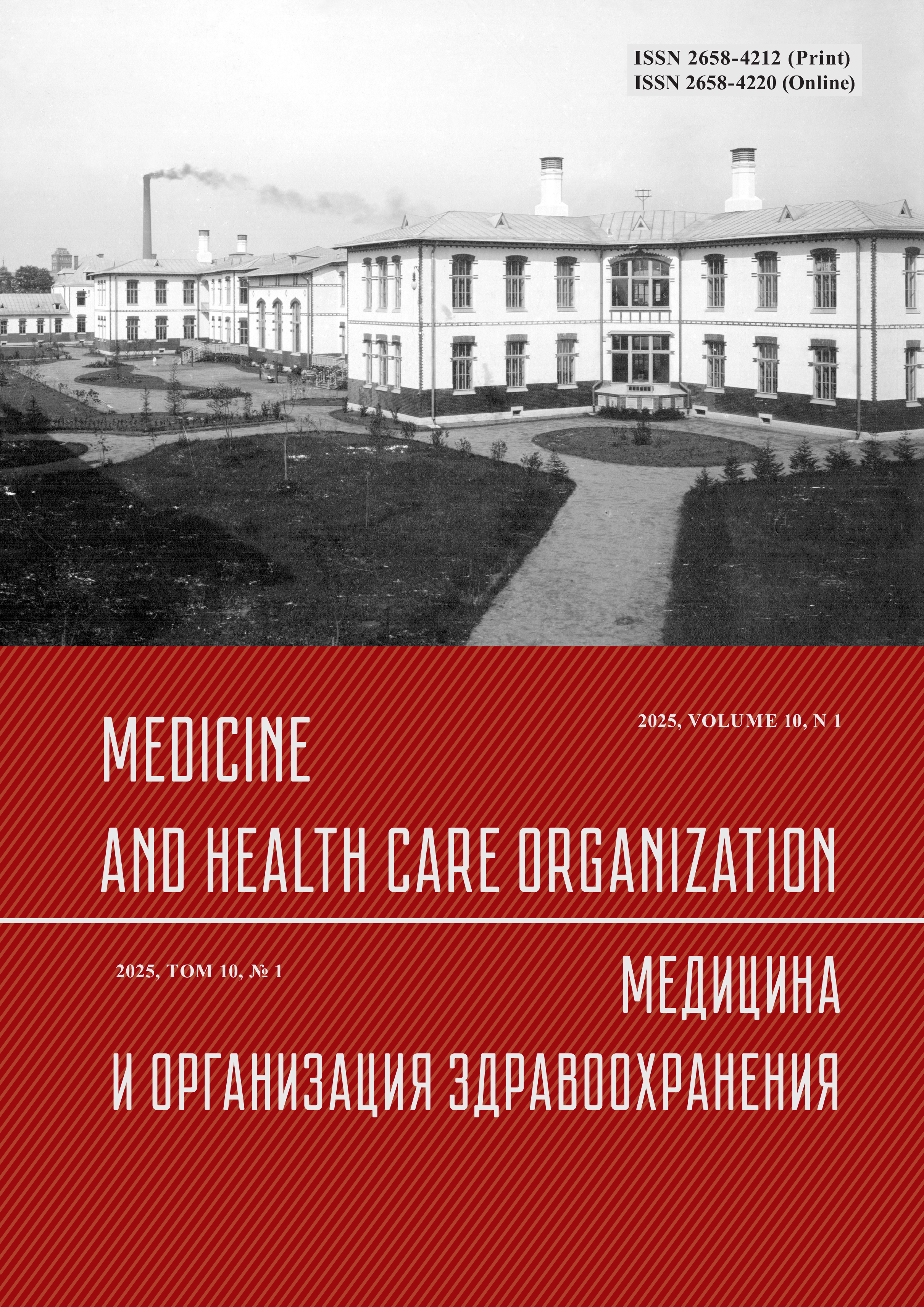Symptoms of secondary traumatic stress in assisting professions
Abstract
The article presents the results of an empirical study on the specificity of secondary traumatic stress disorder (STSD) symptoms among assisting professions. Specialists with assisting roles are at an increased risk of experiencing occupational stress and STSD, making it necessary to differentiate STSD from other similar conditions. Russian studies of STSD among assisting specialists have mainly investigated its association with professional burnout. At the same time, issues relating to job satisfaction, the subjective assessment of professional success, individual characteristics, self-regulation skills, and the establishment of psychological boundaries have not been addressed by any research. The aim of the study was to identify the specificity of STSD symptom expression in assisting specialists, depending on the nature of their professional activities. The study sample consisted of 399 assisting specialists. The group of social workers was subdivided into those who provide support to the families of SMO (Special Military Operation) participants (n=58). The second group consisted of social services staff who perform regular duties without additional workloads (n=274). The third group included medical workers (n=67). The severity of STSD symptoms was assessed using the “Secondary Traumatic Stress Assessment Scale”. The author’s questionnaire was used to clarify subjective attitudes toward various aspects of professional activity and working conditions, as well as to analyze sociodemographic features. The results were analyzed and interpreted using descriptive statistics, and the non-parametric Kruskal–Wallis (H) test was used for intergroup comparisons. During the study, differences in the etiology of STSD symptoms among helping professionals were identified. Medical workers exhibited the most pronounced STSD symptoms. All respondents with pronounced STSD symptoms reported feelings of emotional desolation, underlying irritation, and persistent mental preoccupation with work-related issues after work hours. Significant differences in the prevalence and qualitative content of individual STSD symptoms were found among respondents in different groups with pronounced STSD symptoms.
References
Figley C.R. Compassion Fatigue: Coping with Secondary Traumatic Stress Disorder in Those Who Treat the Traumatized. NY: Brunner/Routledge; 1995.
Newell J.M., MacNeil G.A. Professional Burnout, Vicarious Trauma, Secondary Traumatic Stress, and Compassion Fatigue: A Review of Theoretical Terms, Risk Factors, and Preventive Methods for Clinicians and Researchers. Best Practice In Mental Health. 2010;6(2):57–68.
Thompson I.A., Amatea E.S., Thompson E.S. Personal and Contextual Predictors of Mental Health Counselors’ Compassion Fatigue and Burnout. Journal of Mental Health Counseling. 2014;36(1):58–77. DOI: 10.17744/mehc.36.1.p61m73373m4617r3.
Fogel A. Effective Ways Social Workers Respond to Secondary Trauma. MA Dissertation. Sophia: the
St. Catherine University repository website. 2015. Available at: https://sophia.stkate.edu/msw_papers/444 (accessed: 13.11.2024).
Rauvola R.S., Vega D.M., Lavigne K.N. Compassion Fatigue, Secondary Traumatic Stress, and Vicarious Traumatization: a Qualitative Review and Research Agenda. Occup Health Sci. 2019;3:297–336. DOI: 10.1007/s41542-019-00045-1.
Тимофеева М.Г. Профессиональное выгорание у социальных работников. Вестник Северо-Восточного
федерального университета им. М.К. Аммосова. Серия: Педагогика. Психология. Философия. 2023;1(29):64–72. EDN: GJEDSM.
Boscarino J.A., Figley C.R., Adams R.E. Compassion fatigue following the September 11 terrorist attacks: A study of secondary trauma among New York City social workers. International Journal of Emergency Mental Health. 2004;6(2):57–66.
Bride B.E. Prevalence of secondary traumatic stress among social workers. Social Work. 2007;52(1):63–70. DOI: 10.1093/sw/52.1.63.
Choi G. Secondary traumatic stress of service providers who practice with survivors of family or sexual violence: A national survey of social workers. Smith College Studies in Social Work. 2011;81:101–119. DOI: 10.1080/00377317.2011.543044.
Lee J.J., Gottfried R., Bride B.E. Exposure to Client Trauma, Secondary Traumatic Stress, and the Health of Clinical Social Workers: A Mediation Analysis. Clin Soc Work J. 2018;46:228–235. DOI: 10.1007/s10615-017-0638-1.
Cuthrell К.M., Villamar M., Green T. Analysis of Secondary Traumatic Stress Among Physicians. Asian Journal of Advances in Medical Science. 2022;4(4):72–86. (In English).
Bellolio M., Cabrear D., Sadosty A., Hess E., Campbell R., Lohse C., Sunga K. Compassion fatigue in similar emergency medicine residents compared to other medical and surgical specialties. Western Journal of Emergency Medicine. 2013;15:629–635. DOI: 10.5811/westjem.2014.5.21624.
Dirik D., Sak R., Tuba Sahin-Ska I. Compassion fatigue among obstetricians and gynecologists. Current Psychology. 2021;40:4237–4254. DOI: 10.1007/s12144-021-02022-w.
Weintraub A., Geithner E., Stroustrup A., Waldman E. Compassion fatigue burnout and compassion satisfaction in neonatologists in the US. Journal of Perinatology. 2016;36:1021–1026. DOI: 10.1038/jp.2016.121.
DeLucia J., Bitter C. Fitzergerald J., Greensberg M., Dalwari P., Buchanana P. Prevalence of post-traumatic stress disorder in emergency physicians in the United States. West of Journal Emergency Medicine. 2019;20(5):740–746. DOI: 10.5811/westjem.2019.7.42671.
Khan A., Khan M. Bokhari S. Association of specialty and working hours on compassion fatigue. Pakistan Armed Forces Medical Journal. 2016;66:143–146.
Guest R., Riches J. Physician burnout. 2020. Available at: https://www.jhsph.edu/research/centers-and-institutes/johns-hopkins-education-and-research-center-for-occupational-safety-and-health/m20_handouts/Riches_MARCOEM_Oct_2020_10.7_1.pdf (accessed: 13.11.2024).
Medscape. Lifestyle burnout. 2020. Available at: https://advisory.com/daily-briefing/2020/01/16/physician-burnout-2020 (accessed: 13.11.2024).
Оппедизано М.Д., Артюх Л.Ю. Адаптация человека к экстремальным условиям деятельности. Физиологические механизмы (структурный след адаптации). Forcipe. 2021;4(4):18–25.
Иванов Д., Козина Н., Лакомская А., Аверин В., Федяев А. Проблема профессионального стресса педиатров в условиях пандемии. Медицина и организация здравоохранения. 2023;8(1):60–70. DOI: 10.56871/MHCO.2023.16.89.006.
Cornille T.A., Meyers T.W. Secondary Traumatic Stress Among Child Protective Service Workers Prevalence, Severity and Predictive Factors. Traumatology. 1999;5(1):15–31.
Berceli D., Napoli M. A proposal for a mindfulness-based trauma prevention program for social work professionals. Complementary Health Practice Review. 2006;11(3):153–165. DOI: 10.1177/1533210106297989.
Тарабрина Н.В. Шкала оценки влияния травматического события (impact of event scale-r — ies-r). В кн.: Практикум по психологии посттравматического стресса. СПб.: Питер; 2001:125–139.



